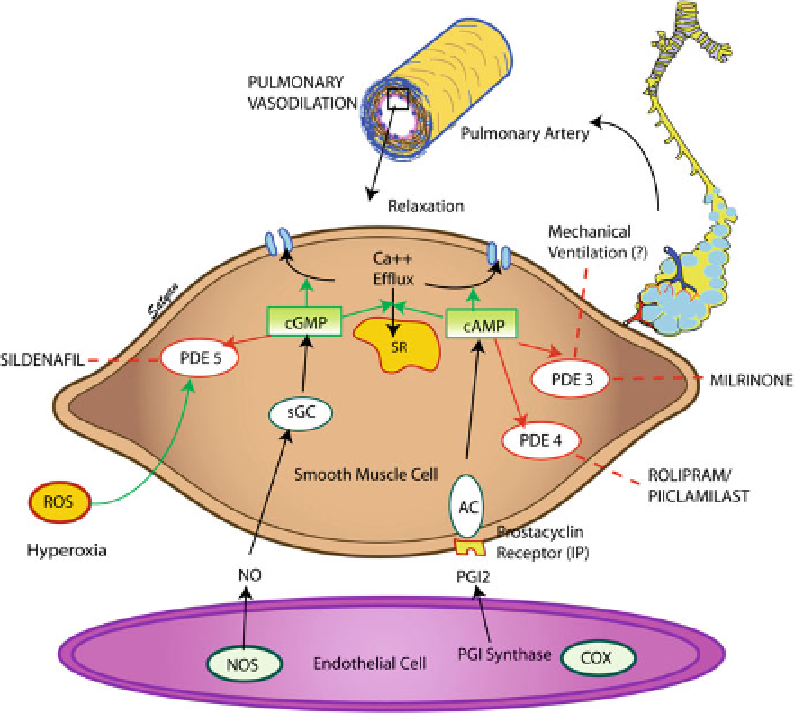Biology Reference
In-Depth Information
Fig. 3 Mechanism of action of phosphodiesterase inhibitors in PPHN. PDEs play a critical role in
regulating cGMP and cAMP within the vascular smooth muscle. Elevations in cGMP and cAMP
lead to vasorelaxation by decreasing intracellular calcium via decreasing calcium efflux from the
sarcoplasmic reticulum and increasing calcium efflux from the cell. PDEs hydrolyze cGMP and
cAMP, thereby preventing cyclic nucleotide-mediated vasorelaxation. Thus, PDE inhibitors such
as sildenafil and milrinone represent promising therapies for neonates with PPHN resistant to
traditional therapy with inhaled nitric oxide.
Dashed lines
represent inhibition. Figure kindly
provided by Dr. Satyan Lakshminrusimha
branches are observed in CDH. Further, abnormal medial muscular hypertrophy is
observed as far distally as the acinar arterioles. Pulmonary capillary blood flow is
decreased because of the small cross-sectional area of the pulmonary vascular bed,
and flow may be further decreased by abnormal pulmonary vasoconstriction
(de Buys Roessingh and Dinh-Xuan
2009
; Farrow et al.
2005
).
There is no ideal animal model in which the disruption in the diaphragm occurs
at the same stage of lung development as is seen in human fetuses. The most widely
utilized is the nitrofen-induced rat model of CDH. In this model, reduced lung
eNOS activity and expression has been described, thereby pinpointing the
eNOS-cGMP pathway as important in the pathogenesis of CDH and its accompa-
nying pulmonary hypertension (Karamanoukian et al.
1996
). Another group has

